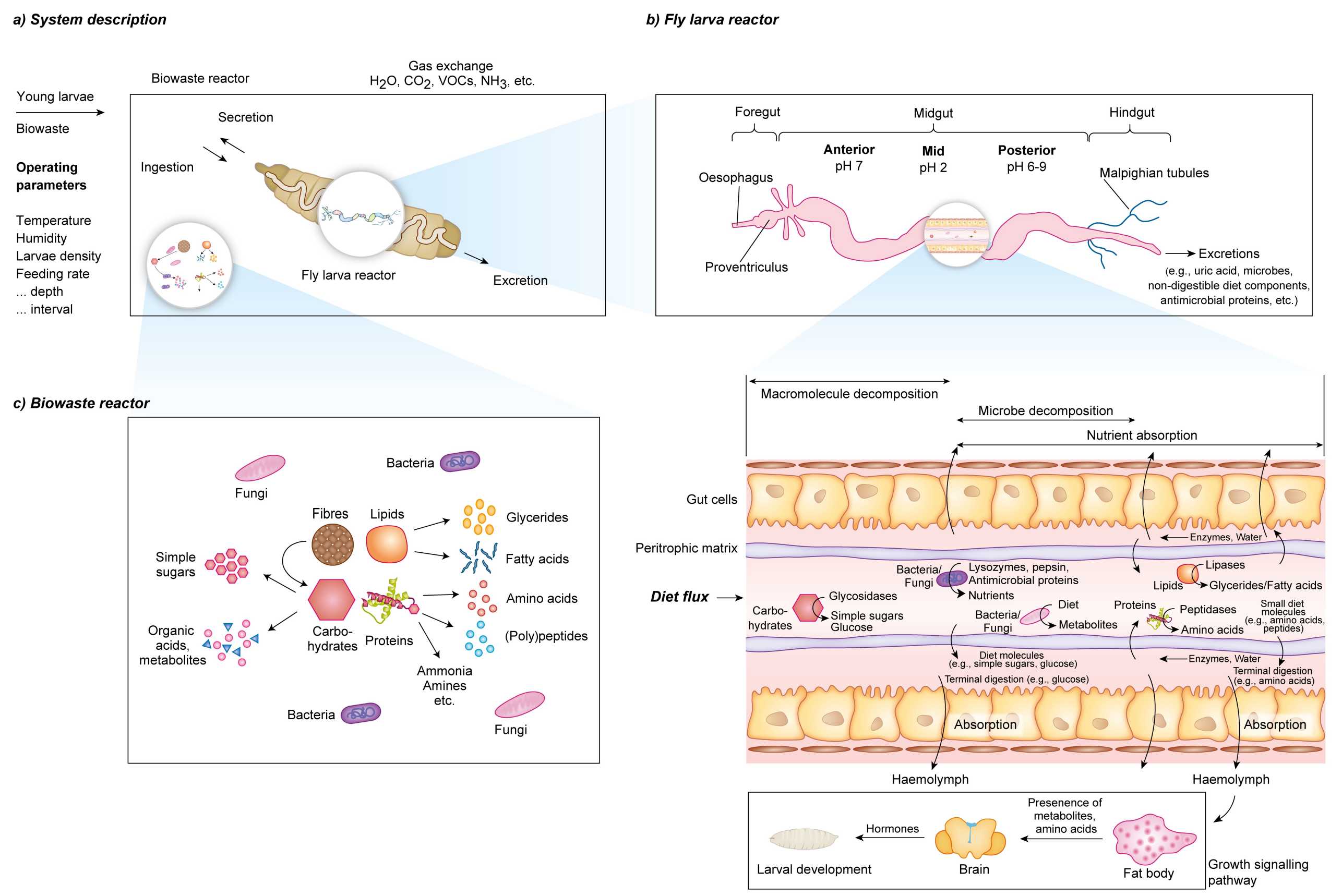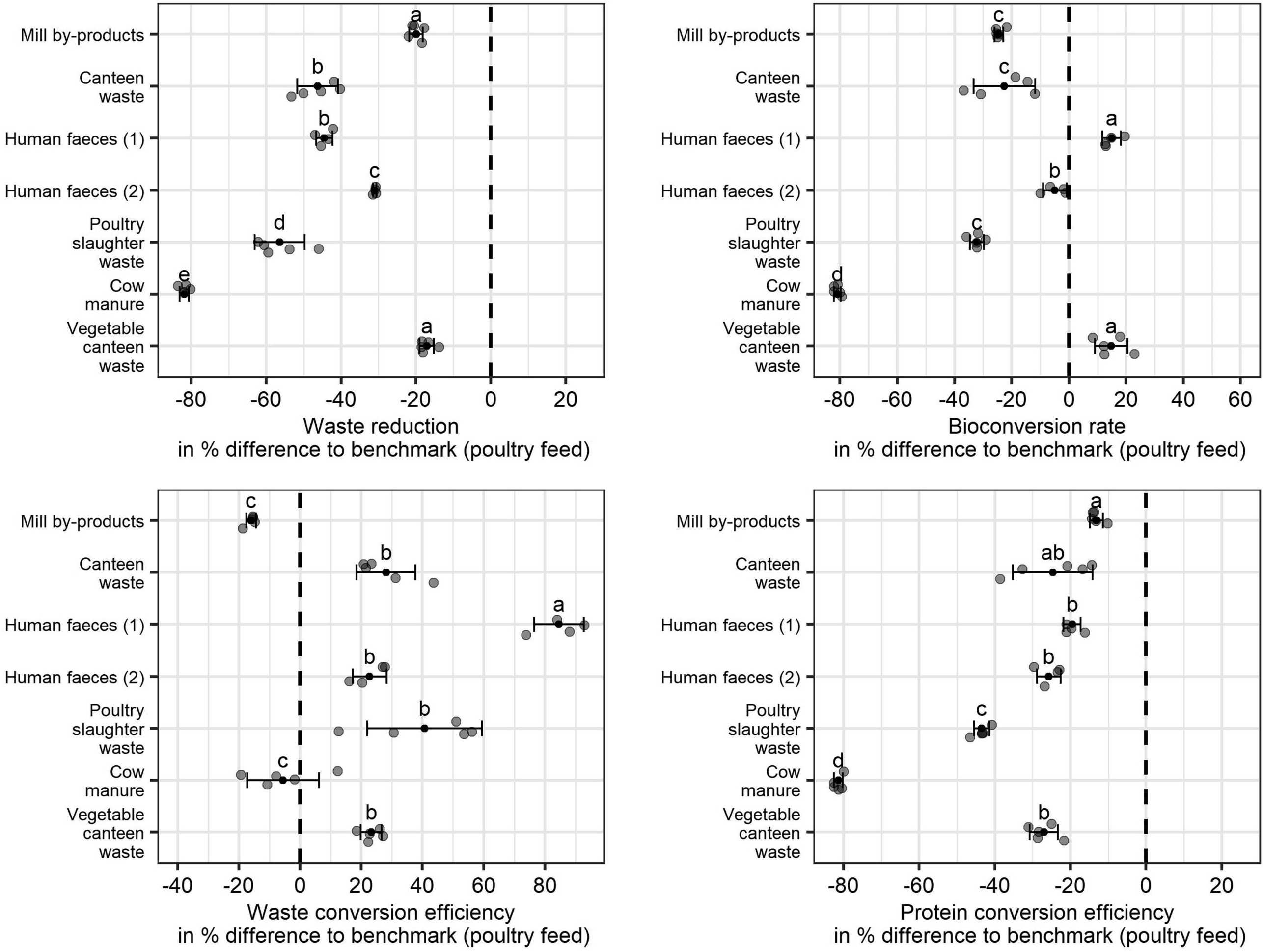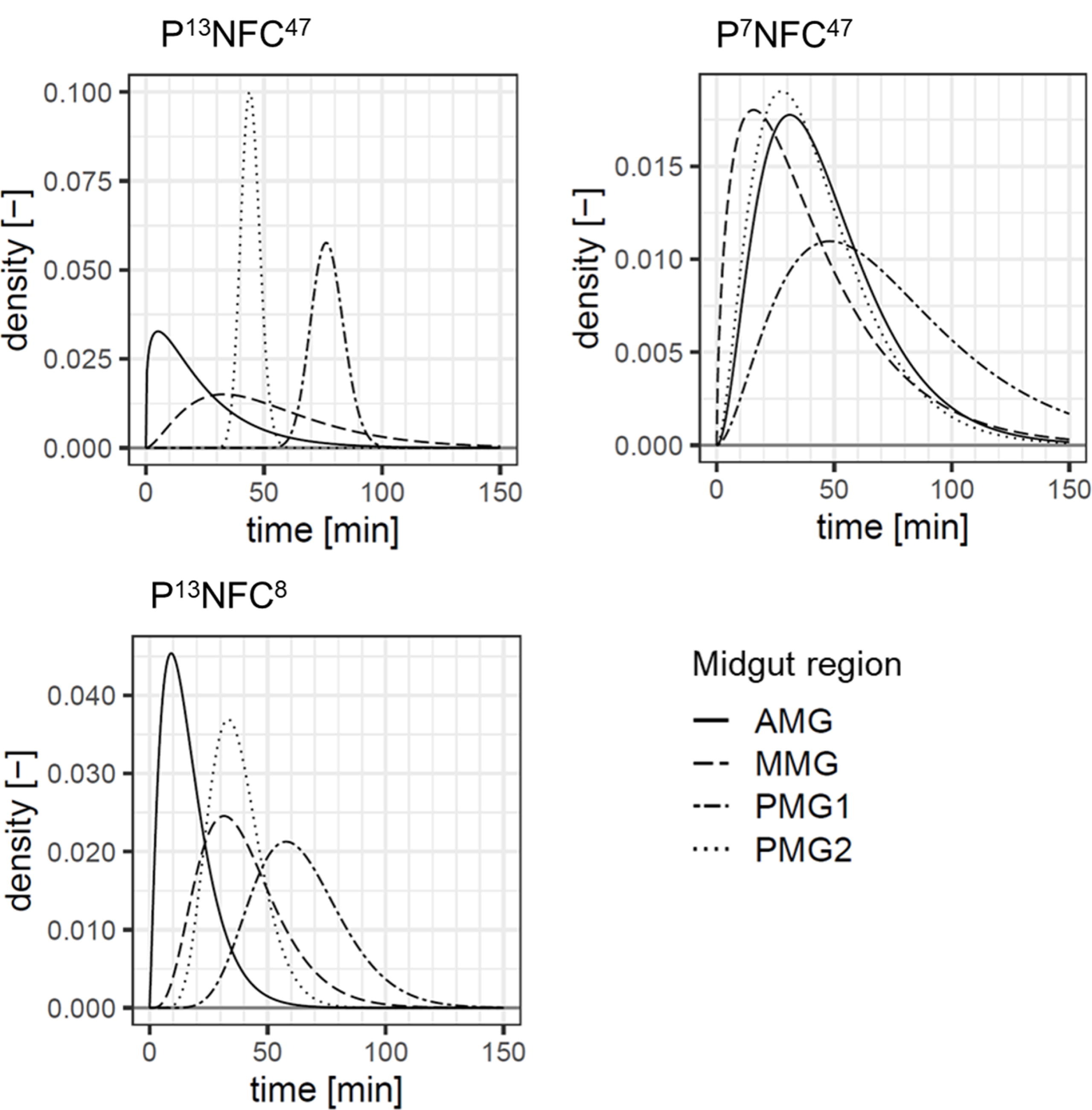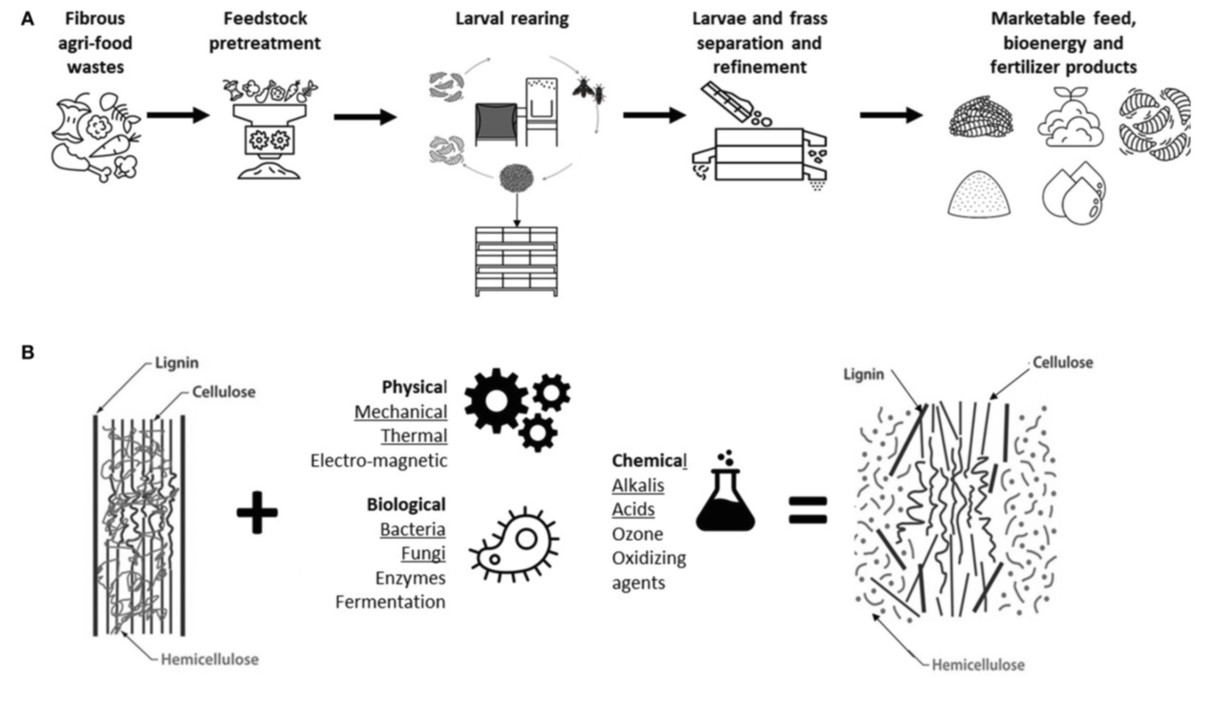Black Soldier Fly Larvae Treatment




Summary
Processing of biowaste with larvae of the black soldier fly, Hermetia illucens L. (Diptera: Stratiomyidae), is an emerging waste treatment technology. Larvae grown on biowaste can be a relevant raw material for animal feed production and can therefore provide revenues for financially viable waste management systems. In addition, when produced on biowaste, insect-based feeds can be more sustainable than conventional feeds. Among others, the scalability of the technology will depend on the availability of large amounts of biowaste with a high process performance (e.g. bioconversion of organic matter to proteins and lipids) and microbial and chemical product safety. Currently, in contrast to other waste treatment technologies, such as composting or anaerobic digestion, the process performance is variable and the processes driving the decomposition of biowaste macronutrients, inactivation of microbes and fate of chemicals is poorly understood. This work presents a summary of the most important processes involved in black soldier fly larvae (BSFL) treatment, based on the available knowledge concerning five well-studied fly species. This is a starting point to increase understanding regarding the processes of this technology, with the potential to increase its efficiency and uptake, and support the development of appropriate regulations. Based on this work, formulating different types of biowaste, e.g. to produce a diet with a similar protein content, a balanced amino acid profile and/or pre- and co-treatment of biowaste with beneficial microbes, has the potential to increase process performance. Following harvest, larvae require heat or other treatments for microbial inactivation and safety.
National University of Singapore (NUS) and Singapore-ETH Centre (SEC) coordinated black soldier fly larvae project, 2022-2024
This project, led by the National University of Singapore (NUS) and the Singapore-ETH Centre (SEC), in collaboration with ETH Zurich and the Nanyang Technological University Singapore (NTU Singapore), aims to develop a blueprint to integrate food waste management and sustainable food production in urban settings like Singapore using black soldier fly larvae.
Selected publications of ETH Zurich SFP Team
Gold M., Tomberlin J.K., Diener S., Zurbrügg C. and Mathys A. (2018). Decomposition of biowaste macronutrients, microbes, and chemicals in black soldier fly larval treatment: A review. Waste Management, 82, 302-318. external page DOI
Giacomo Alciatore, Daniela A. Peguero, Moritz Gold, Christian Zurbrügg, Mutian Niu, Franco Bargetze and Alexander Mathys (2024). Preservation of agri-food byproducts by acidification and fermentation in black soldier fly larvae bioconversion.
Waste Management, vol. 186, pp. 109-118, external page DOI
Daniela A. Peguero, Moritz Gold, Laura Velasquez, Mutian Niu, Christian Zurbrügg and Alexander Mathys (2023). Physical pretreatment of three biowastes to improve black soldier fly larvae bioconversion efficiency
Waste Management, vol. 178, pp. 280-291, external page DOI
Daniela A. Peguero, Moritz Gold, Tim Duewell, Alex Waser, Barbora Dubovcova, Dries Vandeweyer, Christian Zurbrügg and Alexander Mathys (2023). Low energy electron beam to support safe whole dried insect products. Journal of Insects as Food and Feed, vol. 10: no. 3, pp. 473-489, Leiden: Wageningen Academic Publishers, external page DOI
Peguero D.A., Gold M., Vandeweyer D., Zurbrügg C. and Mathys A. (2022). A Review of Pretreatment Methods to Improve Agri-Food Waste Bioconversion by Black Soldier Fly Larvae. Frontiers in Sustainable Food Systems, vol. 5, pp. 745894, external page DOI
Heuel, M., Sandrock, C., Leiber, F., Mathys, A., Gold, M., Zurbrügg, C., Gangnat, I., Kreuzer, M. & Terranova, M. (2021). Black Soldier Fly larvae meal and fat can completely replace soybean cake and oil in diets for laying hens. Poultry Science, external page DOI
Gold M., Fowles T., Fernandez-Bayo J.D., Palma Miner L., Zurbrügg C., Nansen C., Bischel H.N. and Mathys A. (2021). Effects of rearing system and microbial inoculation on black soldier fly larvae growth and microbiota when reared on agri-food by-products. Journal of Insects as Food and Feed, vol. 8: no. 2, pp. 113-127. external page DOI
Gold M., von Allmen, F., Zurbrügg,C., Zhang, J., Mathys A. (2020). Identification of Bacteria in Two Food Waste Black Soldier Fly Larvae Rearing Residues. Frontiers in Microbiology, 11:582867. external page DOI
Gold, M., Binggeli, M., Kurt, F., de Wouters, T., Reichlin, M., Zurbrügg, C., Mathys, A. & Kreuzer, M. (2020). Novel Experimental Methods for the Investigation of Hermetia illucens (Diptera: Stratiomyidae) Larvae. Journal of Insect Science, 20: 21. external page DOI
Gold M., Cassar, C.M., Zurbrugg,C., Kreuzer M., Boulos S., Diener S., Mathys A. (2020). Biowaste treatment with black soldier fly larvae: increasing performance through the formulation of biowastes based on protein and carbohydrates. Waste Management: 102, 319–329. external page DOI
Gold M., Egger J., Scheidegger A., Zurbrugg C., Bruno D., Bonelli M., Tettamanti G., Casartelli M., Schmitt E., Kerkaert B., De Smet J., van Campenhout L., Mathys A. (2020). Estimating black soldier fly larvae biowaste conversion performance by simulation of midgut digestion. Waste Management, 112, 40-51. external page DOI
Smetana S., Schmitt, E. & Mathys A. (2019). Sustainable use of Hermetia illucens insect biomass for feed and food: attributional and consequential Life Cycle Assessment. Resources, Conservation & Recycling, 144, 285-296. external page DOI
Somroo A., Rehman K., Zheng L, Cai M., Xiao X., Hu S., Mathys A., Gold M., Yu Z., & Zhang J. (2019). Influence of Lactobacillus buchneri on soybean curd residue coconversion by black soldier fly larvae (Hermetia illucens) for food and feedstock production. Waste Management, 86, 114-122. external page DOI
Aarts K.W.P., Jansen, M.P.M. Jacobs,A.L.M., Mescher M.C., Prenter R., Mathys A. & De Moraes C.M. (2018). Processing of insect larvae. EU patent application. Application No 18175914.3-110
Smetana S., Palanisamy M., Mathys A., & Heinz V. (2016). Sustainability of insect use for feed and food: Life Cycle Assessment perspective. Journal of Cleaner Production, 137, 741-751. external page DOI